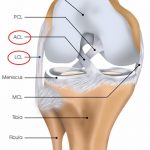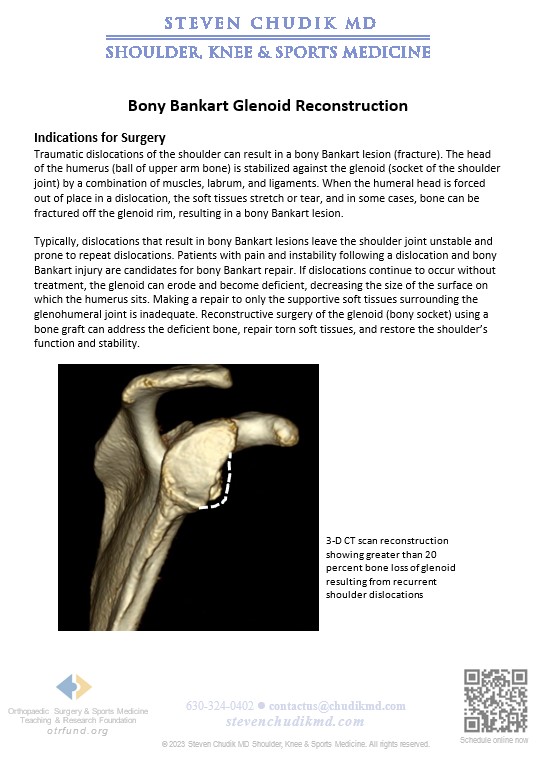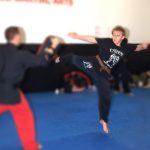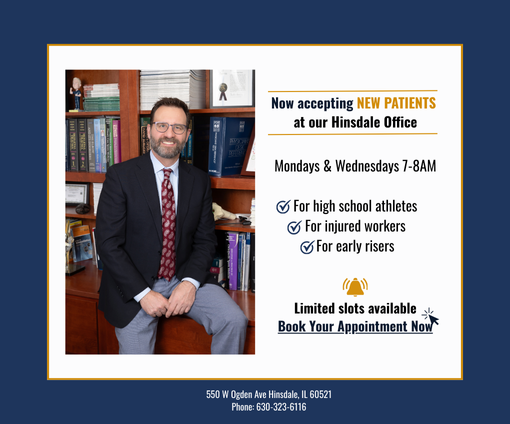 New functional capacity evaluation for ACL injuries definitely tests likeliness for re-injury and readiness to return to sport
New functional capacity evaluation for ACL injuries definitely tests likeliness for re-injury and readiness to return to sport
Home / Shoulder / Shoulder Surgery / Arthroscopic Glenoid Reconstruction Surgery Video
Arthroscopic shoulder expert, Dr. Steven Chudik, explains his procedure for shoulder glenoid reconstruction
Traumatic dislocations of the shoulder can result in a bony Bankart lesion (tear). The head of the humerus (ball of upper arm bone) is stabilized against the glenoid (socket of the shoulder joint) by a combination of muscles, labrum, and ligaments. When the humeral head is forced out of place in a dislocation, the soft tissues stretch or tear, and in some cases, bone is fractured off the glenoid rim, resulting in a bony Bankart lesion.
Typically, dislocations that result in bony Bankart lesions leave the shoulder joint unstable and prone to repeat dislocations. Patients with pain and instability following a dislocation and bony Bankart injury are candidates for bony Bankart repair. If dislocations continue to occur without treatment, the glenoid can erode and become deficient, decreasing the size of the surface on which the humerus sits, making a repair of only the supportive soft tissues surrounding the glenohumeral joint inadequate. Reconstructive surgery of the glenoid using a bone graft can address the deficient bone, repair torn soft tissues, and restore the shoulder’s function and stability
Dr. Steven Chudik, orthopaedic shoulder surgeon performs arthroscopic surgery using a camera that allows him to view the shoulder through small incisions and reconstruct the glenoid as well as repair any torn soft tissue. Dr. Chudik deveoped a special procedure and instruments to arthroscopically replace the missing glenoid bone and fix it into place.
Learn More
 New ACL arthroscopic procedure by Dr. Steven Chudik lets active kids stay active
New ACL arthroscopic procedure by Dr. Steven Chudik lets active kids stay active
Dr Steven Chudik founded OTRF in 2007 to keep people active and healthy through unbiased education and research. Click to learn about OTRF’s free programs, educational opportunities and ways to participate with the nonprofit foundation.
1010 Executive Ct, Suite 250
Westmont, Illinois 60559
Phone: 630-324-0402
Fax: 630-920-2382
(New Patients)
550 W Ogden Ave
Hinsdale, IL 60521
Phone: 630-323-6116
Fax: 630-920-2382
4700 Gilbert Ave, Suite 51
Western Springs, Illinois 60558
Phone: 630-324-0402
Fax: 630-920-2382

© 2025 © 2019 Copyright Steven Chudik MD, All Rights Reserved.

